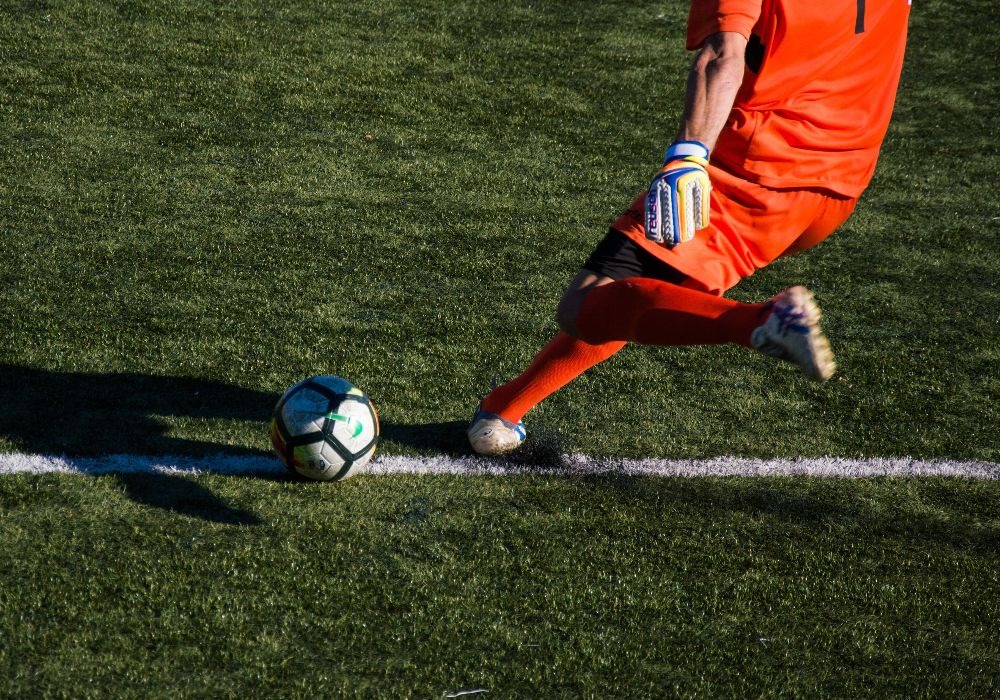The spring soccer season is here! I hope everyone got some much-needed rest over the break, but now it’s time to get back after it. At this point in the year the athletes are starting back with their training and some have begun taking part in light competition. Here at EPOK Performance a lot of time is spent on making sure these athletes are ready for the upcoming youth soccer season. The goal of this article is to cover a few important things to implement so that we can ensure your son or daughter gets the most out of the next few weeks and more importantly has a successful season.
Returning to play after a break in competition is a stressful time for an athlete. They have gone through a period of detraining and are now increasing their individual workload at a relatively fast rate. From what I’ve seen working with youth soccer players, the exact amount of training volume varies significantly. It’s not uncommon to have athletes putting in anywhere from 3 to 10 sessions per week not counting games. That is a wide range when trying to give advice, so it is important to look at the individual athlete and avoid comparing them to their peers.
Why Is This Important?
The concern with this change in training workload is that it is often times a good predictor of injury rates. A large amount of injuries occur during the preseason and early part of the regular season. This is due to that abrupt change in training workload. From an injury prevention standpoint, the ratio between chronic workload (average workload over 4 weeks) and acute workload (workload performed over 7 days) can give a good snapshot of fatigue and potential risk of injury. Since the last 4 weeks have been relatively light for most of you and full training is starting to resume it is important to be aware of the special considerations that this time of year requires.
There are long-term and short-term strategies to dealing with periodic increases in workload and stress.
Long-Term Strategies
Long-term strategies require planning and commitment on your part. Having your child in a proper strength and conditioning program, working on things like strength training, mechanics, posture, mobility, etc, combined with quality youth soccer coaches will provide a complete approach to physical preparedness. The execution of this plan would obviously fall mostly on strength coaches like myself.
From a youth soccer standpoint, improving technique and movement efficiency decreases energy expenditure and fatigue. The movements of sport are random but all things being equal a more technical player will be able to handle more repetitions than a less technical player. With regards to strength and conditioning, it has been shown that athletes with the highest levels of strength, speed, and speed endurance experience the lowest occurrence of injury. These characteristics are not built over night so having a long-term athletic development strategy specific to soccer is important.
Short-Term Strategies
The short-term strategies are much more relatable to this current time of year and can be used to make some immediate contributions. All of the athletes are experiencing increases in workload and there is very little that can be done about that. What we can do is look at managing fatigue and recovery. I would recommend giving extra attention to your athlete’s nutrition and recovery.
Nutrition
We want to properly fuel them for activity so they can handle the increased workload they are experiencing. I believe in quality nutrition practices but given the age and workload of the athletes I wouldn’t exclude any food items during this time of year. That doesn’t mean load up on the ice cream, but rather, take a balanced approach with their food choices.
Hydration also needs some increased attention. Prepare your child for afternoon practice by making sure they are drinking throughout the day. The real work starts after practice is over. It is important to rehydrate properly so that your son or daughter is able to recover. An easy way to make sure they have adequately rehydrated is to weigh them before and after practice. Then have them drink until they are back to their pre-practice bodyweight.
Recovery
Rest.Rest.Rest. Everyone is looking for the latest greatest recovery tool but there is nothing wrong with some good ole couch time. Have your child relax when they can. It is common in the soccer community to workout at home or hit up a Sunday run. I would advise against this during this time of the season. Remember what I talked about earlier with the ratio of acute and chronic workload, any additional training will add to the workload. Basically, during the preseason let the pros handle it. The soccer coaches and strength and conditioning professionals are putting them through enough work.
Don’t forget about sleep. Practice good sleep hygiene, especially after games. Studies have shown a tendency to experience better sleep leading up to a game then the day after. This is potentially due to the players perceived need to sleep as preparation. After a game they focus on relaxing and catching up on social activities they missed due to their schedule as a youth soccer athlete.
Wrap Er Up
These changes in workload do not just occur at the start of the season but this is an important time to shed some light on the relationship between workload and performance/injury prevention. I think it goes without saying that proper nutrition and recovery is important no matter what time of year it is. Better manage your son or daughter’s level of fatigue by using this information to identify times in the season with a high workload. It is impossible to predict or completely prevent an injury. But, if you take the steps I described you can ensure that your child will be prepared to take on the rigors of sport.
Hope this info helps. As always if you have any questions about what was discussed in this article you can reach me here.
Talk soon,
John Evans

